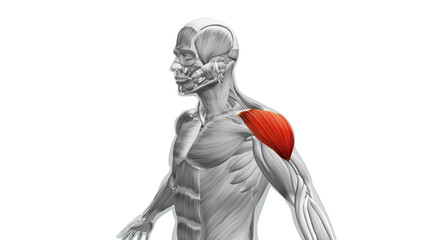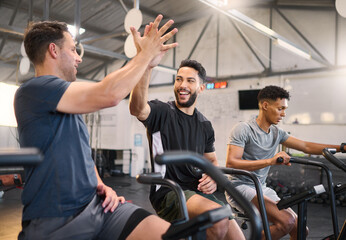Understanding the different heads of the shoulder is essential for anyone looking to develop well-rounded shoulder strength and aesthetics. The shoulder is a complex joint with multiple muscle heads that need to be targeted to achieve balanced growth and function. In this blog post, we’ll explore the different heads of the shoulder and provide tips on how to effectively train each one.
The Different Heads of the Shoulder
The shoulder muscle, known as the deltoid, comprises three distinct heads: the anterior (front) head, the lateral (side) head, and the posterior (rear) head. Each head plays a unique role in shoulder movement and requires specific exercises to be effectively trained.
1. Anterior Deltoid (Front Head)
The anterior deltoid is located at the front of the shoulder and is primarily responsible for shoulder flexion and inward rotation. This muscle head is heavily engaged during pushing movements and exercises that bring the arm forward.
2. Lateral Deltoid (Side Head)
The lateral deltoid sits on the side of the shoulder and is crucial for shoulder abduction, which involves lifting the arm away from the body. Training the lateral deltoid helps create the appearance of broader shoulders.
3. Posterior Deltoid (Rear Head)
The posterior deltoid is situated at the back of the shoulder and is involved in shoulder extension and external rotation. This muscle head is essential for pulling movements and maintaining shoulder stability and posture.
Exercises for the Different Heads of the Shoulder
To develop well-rounded shoulders, it’s important to incorporate exercises that target each head of the deltoid. Here are some effective exercises for each part of the shoulder:
Anterior Deltoid Exercises
- Front Raises: Stand with your feet shoulder-width apart, holding a dumbbell in each hand. Lift the weights straight in front of you until your arms are parallel to the ground, then lower them back down slowly.
- Arnold Press: Start with dumbbells at shoulder height, palms facing you. Press the weights overhead while rotating your palms to face forward, then reverse the motion to return to the starting position.
- Push Press: Hold a barbell at shoulder height with an overhand grip. Slightly bend your knees and then explosively press the bar overhead, using your legs to assist.
Lateral Deltoid Exercises
- Lateral Raises: Stand with your feet hip-width apart, holding a dumbbell in each hand. Lift the weights out to the sides until your arms are parallel to the ground, then lower them back down with control.
- Upright Rows: Hold a barbell or dumbbells in front of your thighs with an overhand grip. Pull the weights up towards your chin, keeping your elbows higher than your wrists, then lower them back down.
- Cable Lateral Raises: Stand next to a cable machine with the handle set at the lowest position. Hold the handle with one hand and lift your arm out to the side, keeping a slight bend in your elbow, then return to the starting position.
Posterior Deltoid Exercises
- Reverse Flyes: Sit on the edge of a bench with dumbbells in your hands, leaning forward at the hips. Lift the weights out to the sides until your arms are in line with your shoulders, then lower them back down.
- Face Pulls: Set a rope attachment on a cable machine at eye level. Hold the ends of the rope with both hands and pull it towards your face, keeping your elbows high and squeezing your shoulder blades together.
- Bent-Over Rows: Stand with your feet shoulder-width apart, holding a barbell with an overhand grip. Bend at the hips and knees, pulling the bar towards your lower chest, then lower it back down.
Tips for Effective Shoulder Training
- Balanced Routine: Ensure your workout routine includes exercises that target all three heads of the shoulder to promote balanced muscle development.
- Proper Form: Focus on maintaining proper form to prevent injuries and maximize muscle engagement. Avoid using momentum to lift weights.
- Progressive Overload: Gradually increase the weight or resistance to continue challenging your shoulder muscles and promoting growth.
- Rest and Recovery: Allow adequate rest between shoulder workouts to enable muscle repair and growth.
- Nutrition: Support your training with a balanced diet rich in protein, healthy fats, and complex carbohydrates to fuel muscle growth and recovery.
Conclusion
Understanding the different heads of the shoulder is crucial for achieving well-rounded shoulder strength and aesthetics. By incorporating exercises that target the anterior, lateral, and posterior deltoids into your workout routine, you can effectively develop each part of the shoulder. Prioritize proper form, progressive overload, and adequate recovery to maximize your results. With this guide, you’re equipped to enhance your shoulder training and achieve your fitness goals for stronger, more balanced shoulders.






This Post Has One Comment
tipobet porn